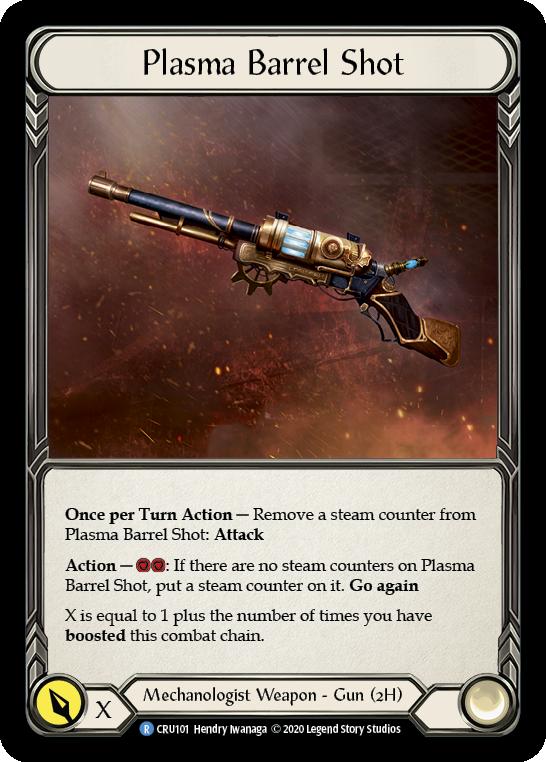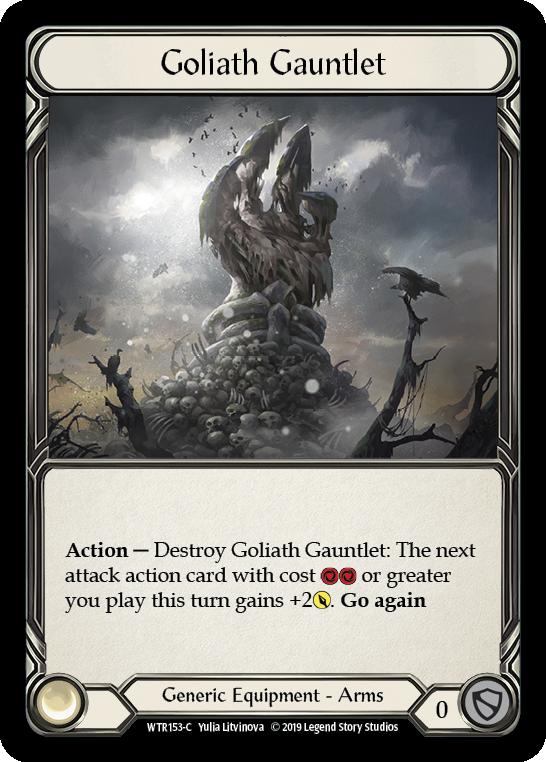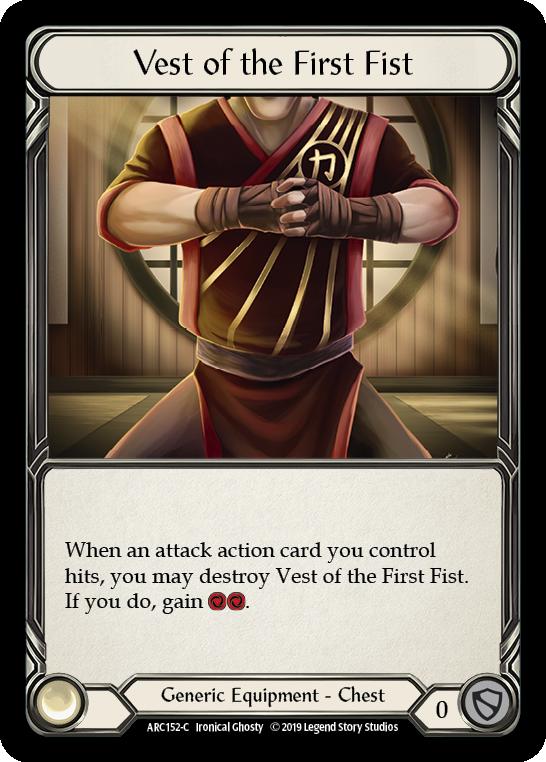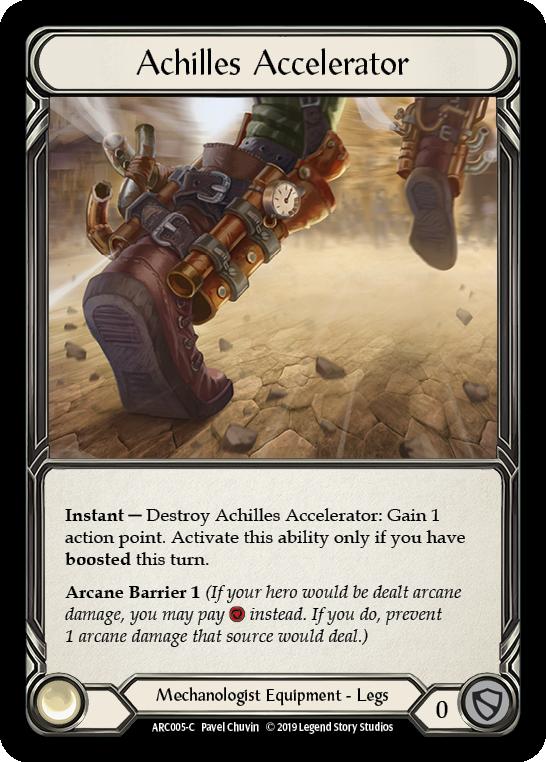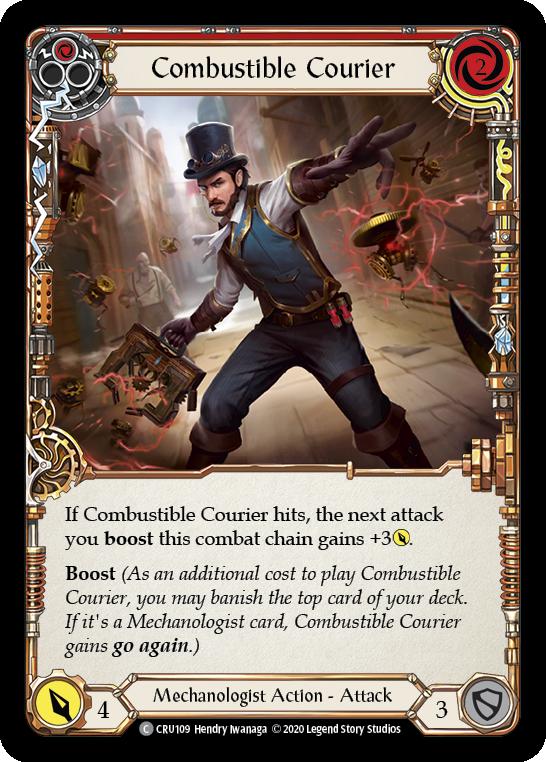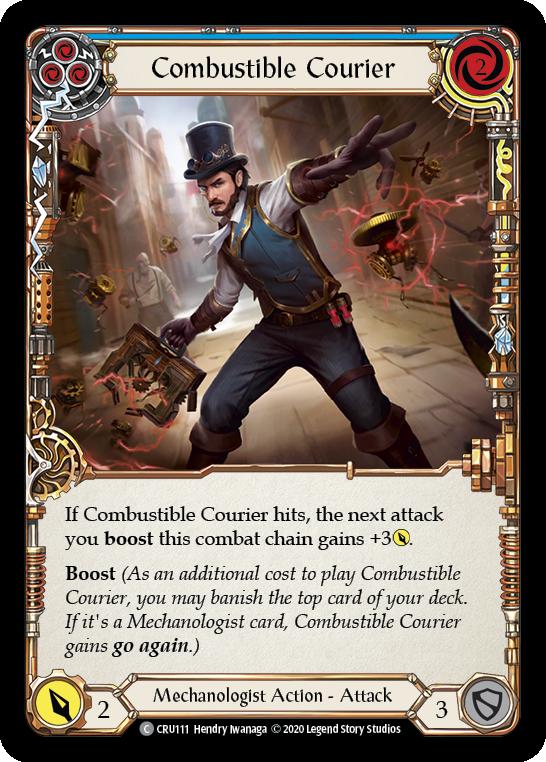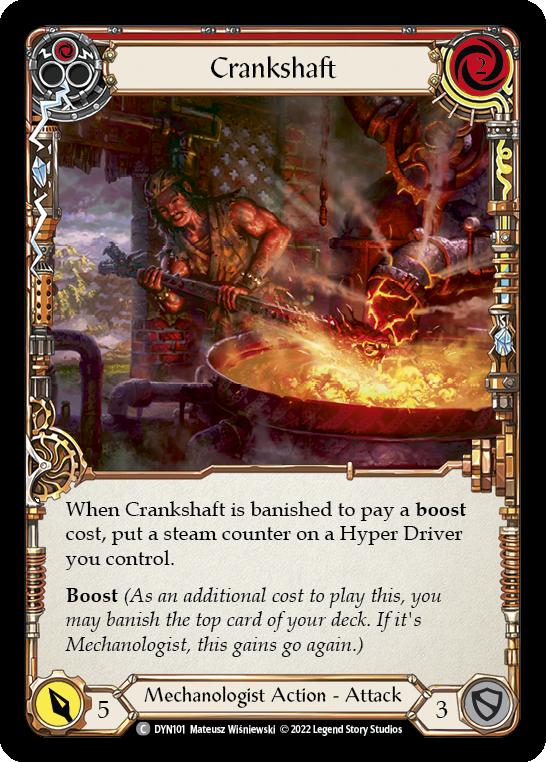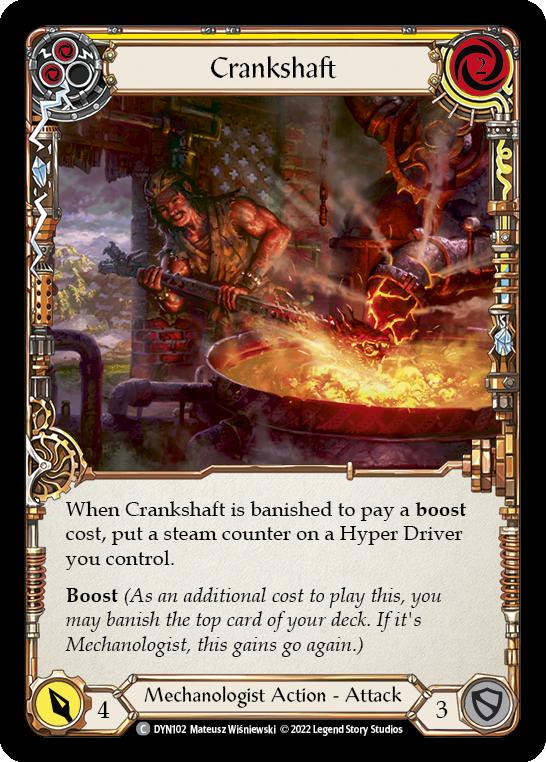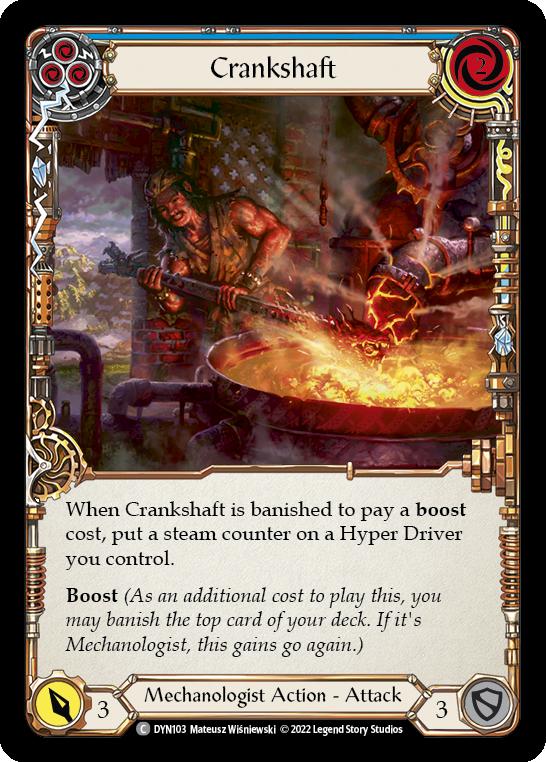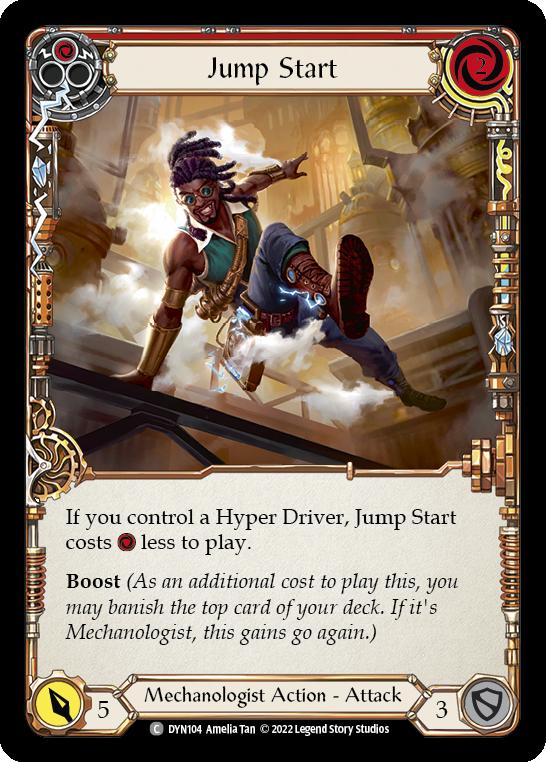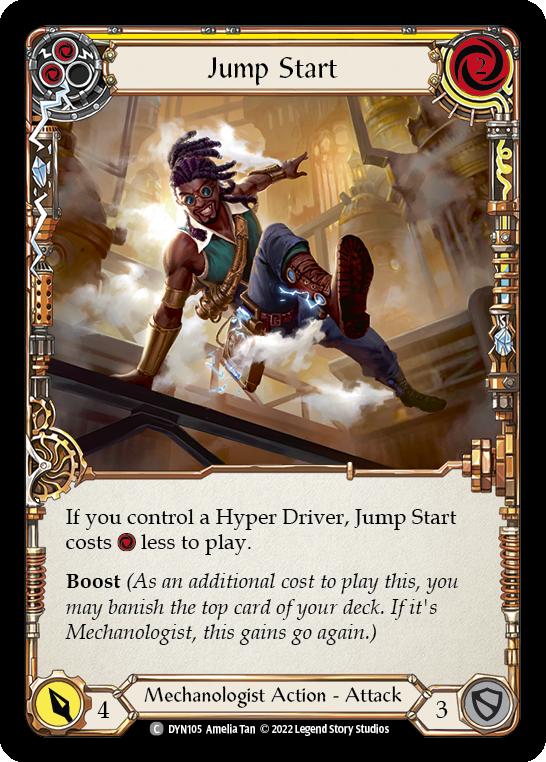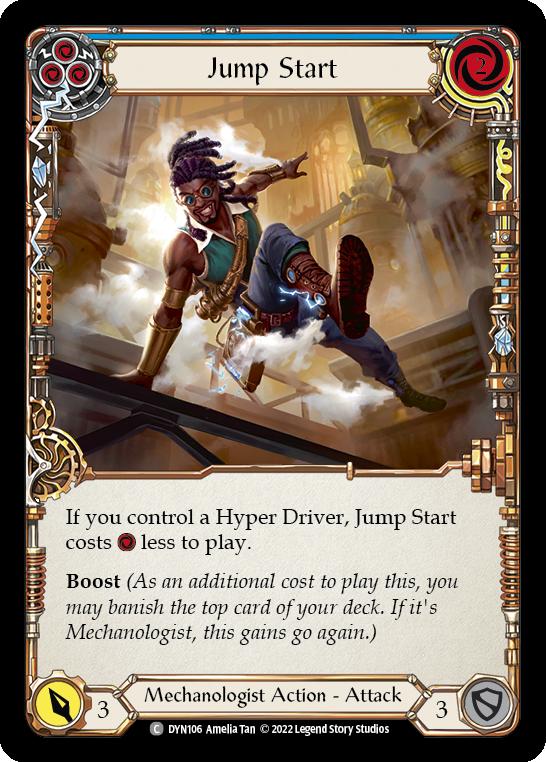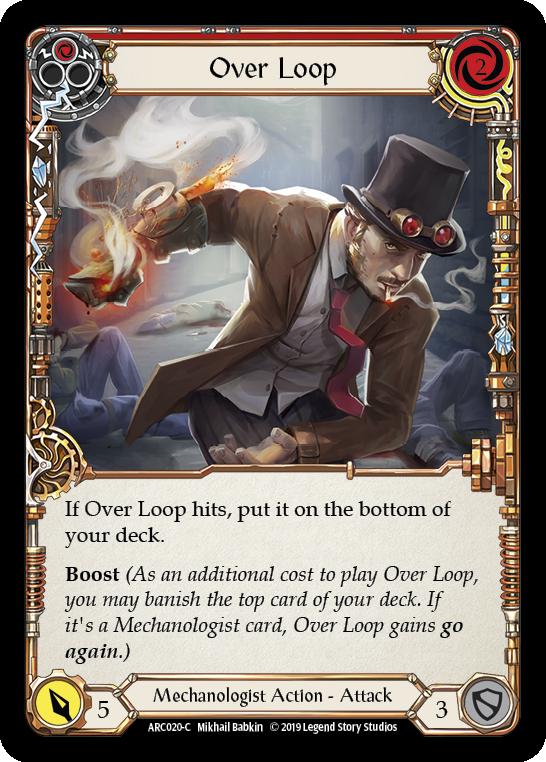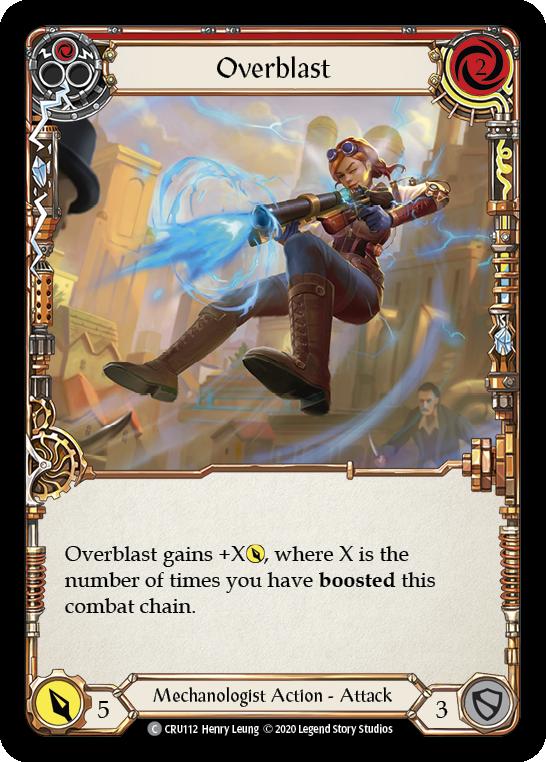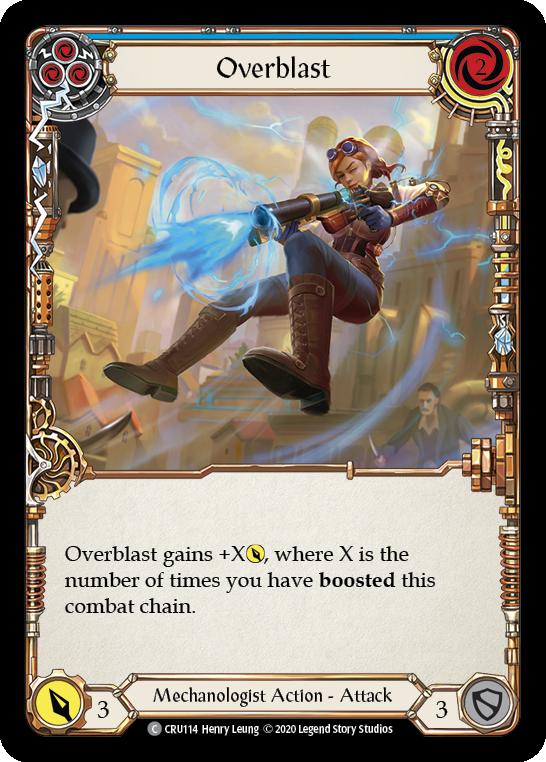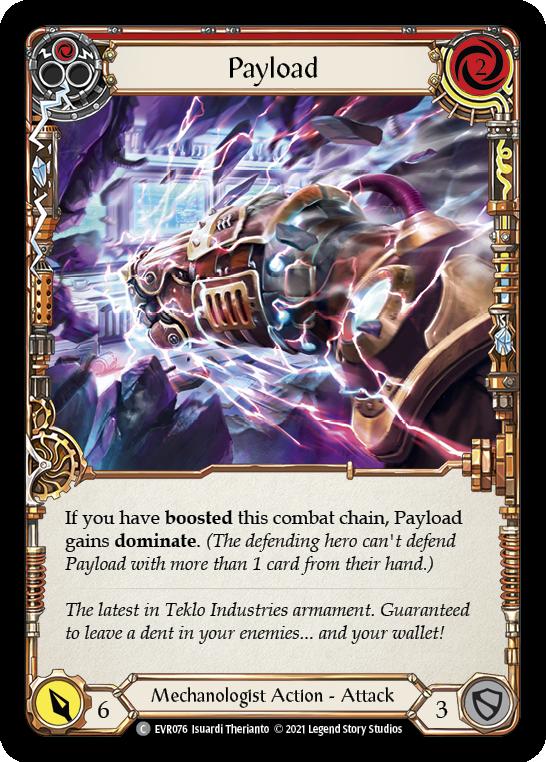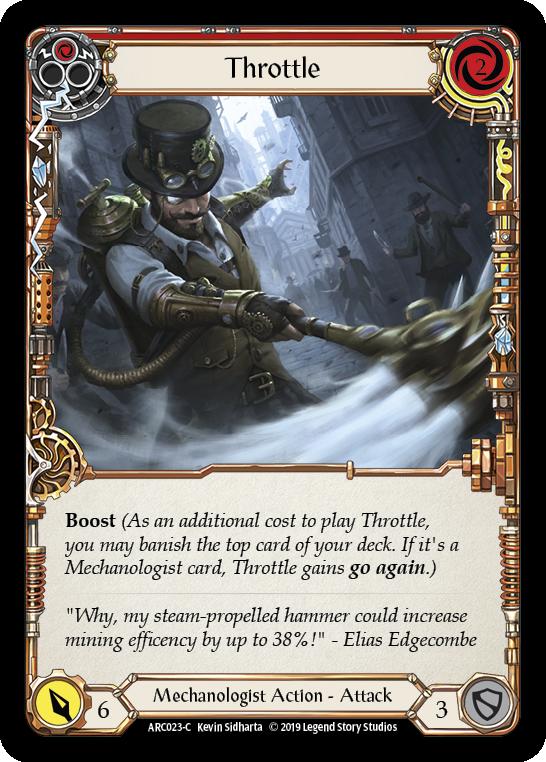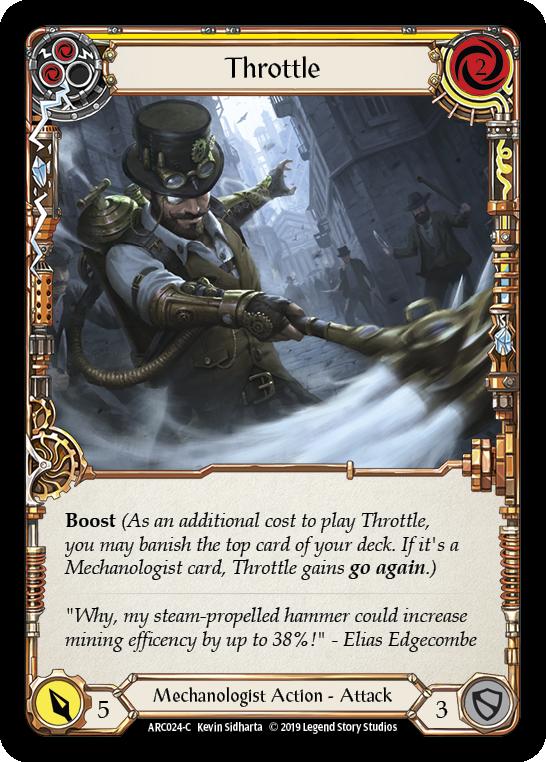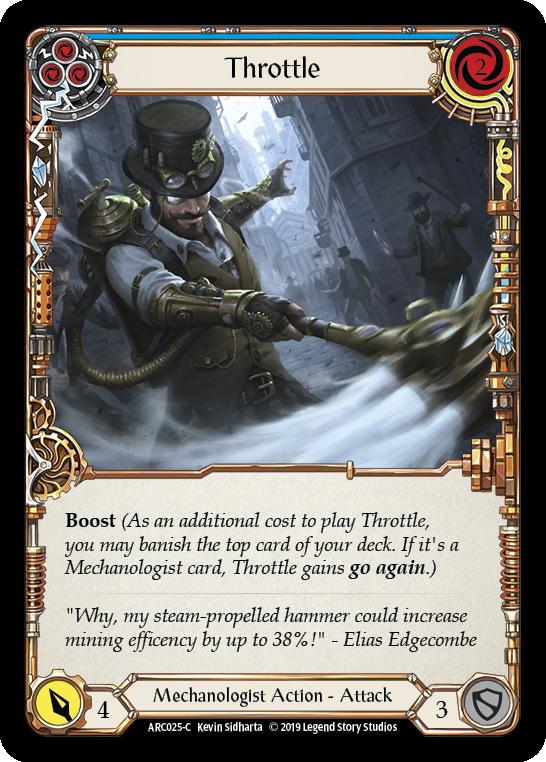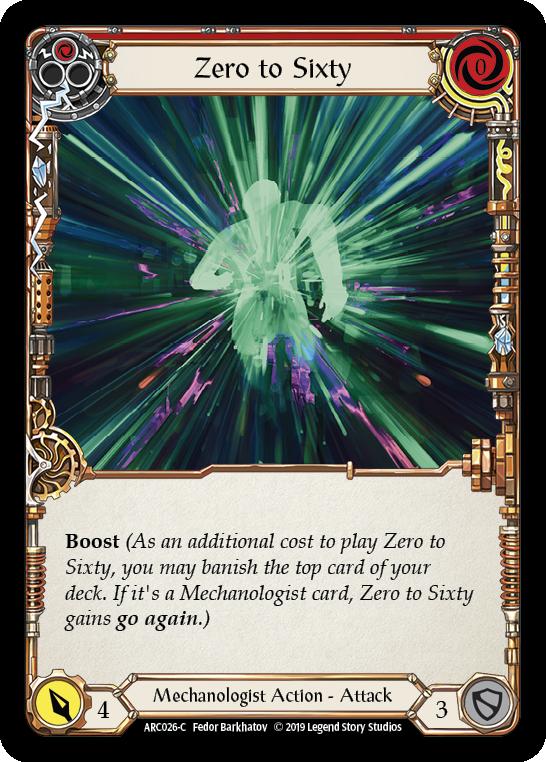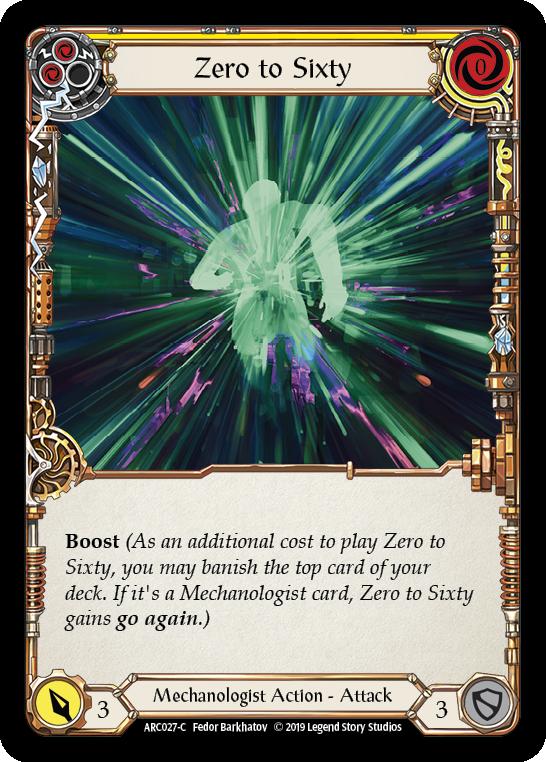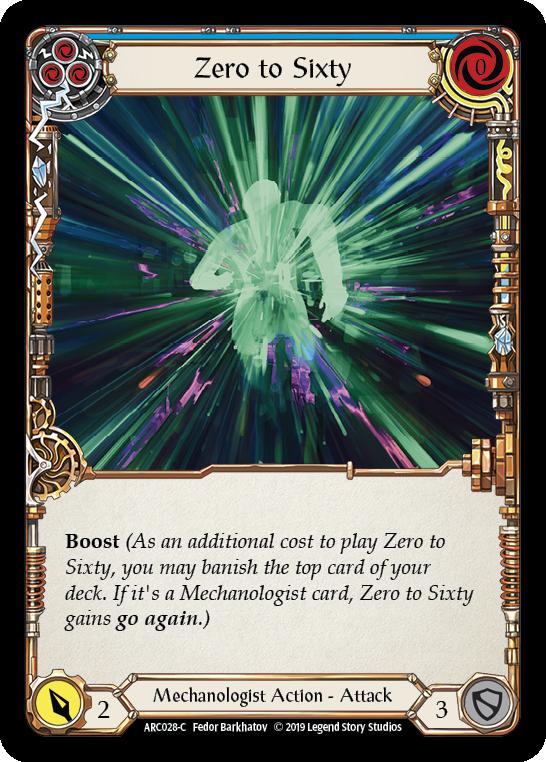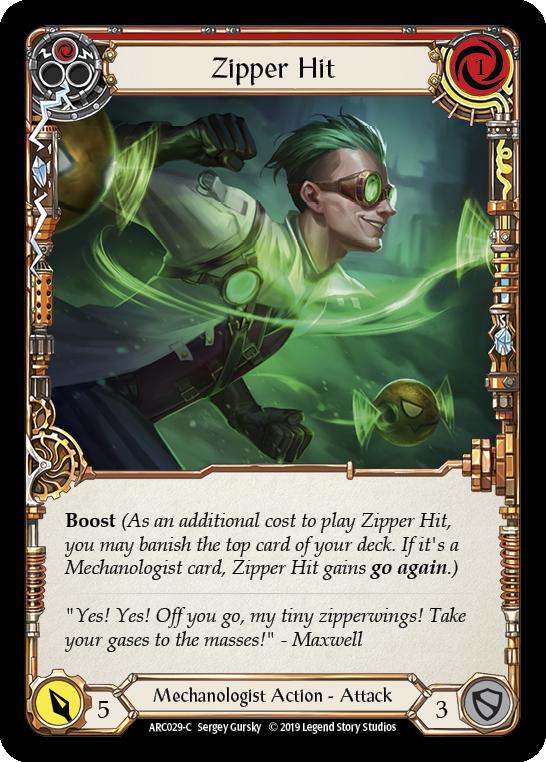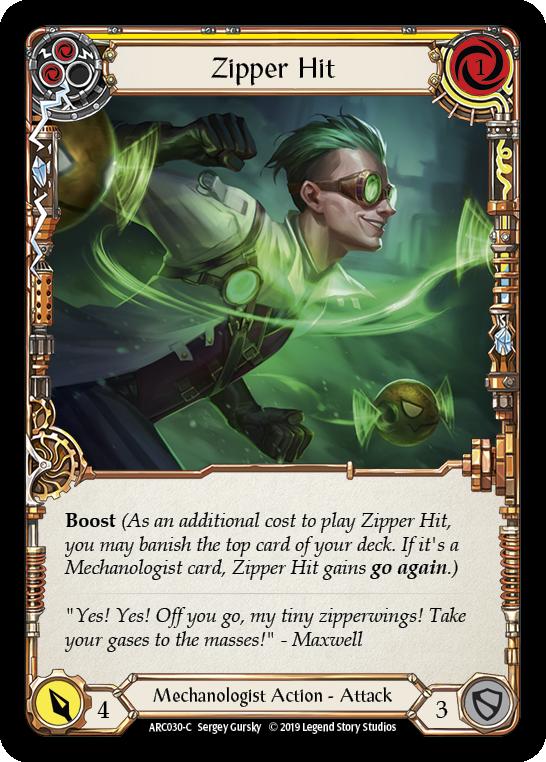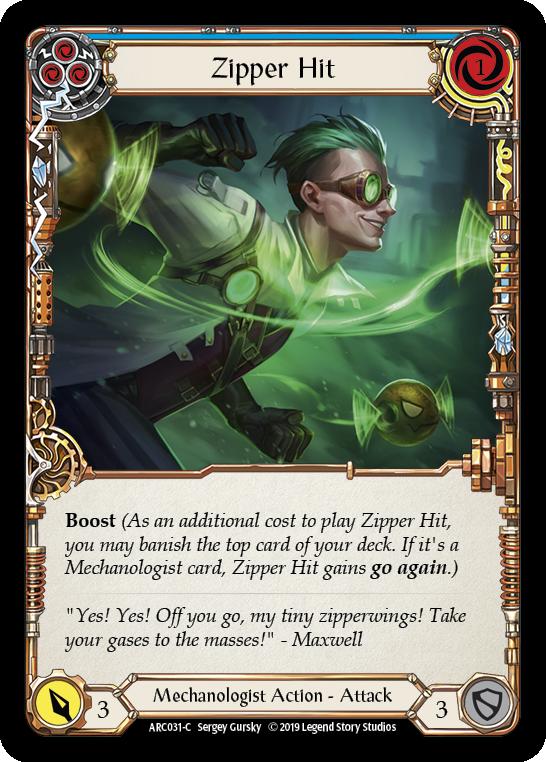The Best Bright Lights and Round the Table Cards for Commoner
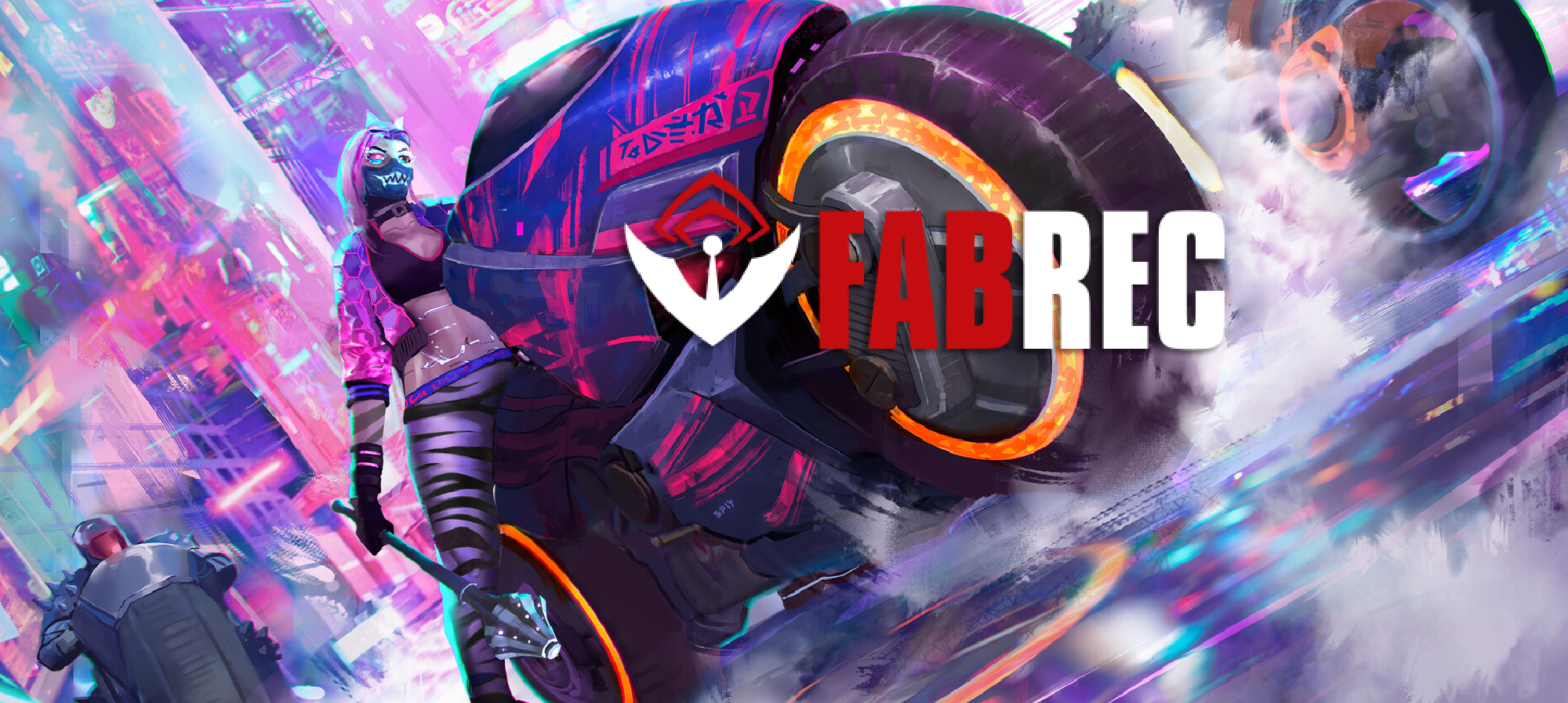
(Rev Up | Art by Nikolay Moskvin)
Welcome to this review of Bright Lights and Round the Table through a Commoner lens. I’ll start off by saying that I’m reviewing the cards in this set from the perspective of how the new cards fit into existing archetypes, which is also to say that a lot of the new items and attacks made for Draft environments will largely be ignored in this article. If they happen to spawn a new archetype or deck within the format, then perhaps I will revisit them at a later date.
For now, I’m exclusively looking at the cards that will make an impact or play a role in the established Commoner metagame.
Bright Lights
First and foremost are the slew of new Mechanologist cards in Bright Lights. While many of them seem to be near identical, save for a few mechanical differences (can’t be blocked by equipment and gaining strength for each equipment blocking it being the main two), most of the attacks exist on the two-for-five, one-for-four, and zero-for-three range, meaning that existing cards such as Zero to Sixty and Zipper Hit are yet to be dethroned.
Let’s take a look at Daniel Baxendale’s Dash list that made Top 8 of the Commoner event at Calling: Birmingham this year.
Hyper Dash by Daniel Baxendale
Speaking as someone who’s regularly played against Dan at my former local Armory in Birmingham, this deck is an absolute beast that pumps out damage like nothing else in the format. While there are a few differences in our Dash lists, the core of it remains largely the same, and there are only a few real flex slots available to tinker with. I’ve identified these as the blue Combustible Courier, blue Throttle, and some number of Overblast and the Payload.
Dan has spoken to how much he enjoys having a dominated attack as a backup or surprise game-ender, but I think that Bright Lights has a few cards that could be worthy additions to the lineup.
Big Bertha
While the difference between costing two and three is quite a large leap when the deck relies on equipment such as Vest of the First Fist, Big Bertha functions as a slightly more expensive and hard hitting Crankshaft.
Bright Lights Set Review – Mechanologist Attack Actions Part 2
From personal experience, there’s little agency as the person playing against Dash, and the games where the Hyper Driver stays around for longer play out extremely differently than the games where it’s destroyed after three turns. Having extra redundancy in this department is invaluable, and while I currently don’t see much room for fitting in the full six, I can definitely see the blues replacing Combustible Courier and a red replacing the one Over Loop in the deck.
Rev Up
This card is awesome. With a Hyper Driver in play it functions as a pseudo one-for-six, which could potentially see a shift away from the need for Throttle. I currently hold the belief that Dash should, in almost every matchup, seek to end the game as quickly as possible, and that building the deck assuming you’re going to have the Hyper Driver in play is always correct when factoring in Hope Merchant’s Hood. At the very least, I could see cutting some of the non-boost attacks in the deck to ease up the pressure on holding onto Achilles Accelerator for the absolute correct moment.
Round the Table
Round the Table, the product designed in collaboration with Tolarian Community College and aimed at jumpstarting people into the multi-player format Ultimate Pit Fight, contains some amazing new additions into the Commoner pool, again in part due to LSS’ inclusion of new and exciting equipment designs at rare.
Ultimate Pit Fight – A #FABDad’s Guide to Multiplayer Flesh and Blood
The Civic Set
I’m going to group this entire set of gear together when discussing their viability within the existing decks. While the UPF-geared templating allows for some real decision-making when playing with friends and trying to create political allies, in Commoner this set of gear’s effect only benefits your one opponent. The question then is, which of the upsides can be the most easily mitigated?
On first glance, Civic Steps seems to be an almost no-brainer as an upgrade over Ironrot Legs, especially within the context of a hyper-defensive Guardian deck such as Oldhim. Additionally, many of the aggressive decks within Commoner already generate their own sources of go again, and the boon of the Quicken ranges from less effective to almost useless.
Beware of Runeblades though, a free go again might open up an extended line of attack mid-combat chain, so don’t freely block with it.
On the other end of the spectrum, Civic Peak is almost certainly the most dangerous of the four to be playing. While drawing them one card closer to fatigue is cute, the extra resource within the turn can give the opponent the opportunity to arsenal the card drawn or continue with their attacks. Add in the fact that Helm of Isen’s Peak has potential to enable six-card hands, particularly important when needing to close the game with a Macho Grande or to preemptively set up for an incoming large turn, and it’s not even a close comparison.
As for Civic Duty and Civic Guide, while giving a Might may seem easily mitigated by simply blocking or, in Oldhim’s case, using the Earth ability; proceed with extreme caution. Guardian’s worst matchup in Commoner is Ira, and enabling essentially two extra damage in Kodachi attacks that force action is quite a high price to pay, as Ira is one of the few decks that can play the fatigue game plan with us.
There are also cases of giving Dash, Runeblades, and Rangers an extra point of strength that can create some awkward breakpoints, threatening multiple on-hits that make me hesitant to play the Guide. If your local meta has less of these on-hit dependent or hyper-aggressive heroes, then enjoy the extra defense.
Sweet Songs and Crazy Cats – A Round the Table Set Review (Melody & Ira)
Unfortunately, Vigor is almost as detrimental as a card drawn from the Civic Peak, as the extra resource being generated at the start of the opponent’s next turn can help dig them out of awkward hands and extend further, without the freedom of at least choosing when to give them an extra card with it.
Mask of Three Tails
A truly fascinating alternative for the Ninja head slot, Mask of Three Tails offers a one-shot Mask of Momentum effect. And in a format where card draw is scarce, I can think of a few decks that may want such an effect.
Of course, there’s already a lot of competition in a similar space. Hope Merchant’s Hood and the Masks of Many Faces and Shifting Perspectives all offer slightly different takes on card advantage, whether by providing a mulligan, fixing awkward hands, or filtering. In the case of most Ninjas, Hood is simply too strong an effect to not be playing, especially when you’re relying on digging for specific cards, whether they be combo pieces, a big attack for Ira, or simply to shuffle away Phoenix Flames. However, I’m a big fan of playing this Mask in Benji because, as I mentioned in my last article, his main struggle is in churning through the deck and keeping up the damage output.
I believe this is a great upgrade to a struggling hero.
Pouncing Paws
Another piece for the fabled “Tiger” build of Ira or Katsu, Pouncing Paws is perhaps what that deck needed to be propelled as a true viable alternative. Oftentimes, those lists would flounder without access to the first Crouching Tiger, and having that stapled as an instant-speed ability on a battleworn piece of equipment is something I’d never imagine to be possible. Of course, with Stubby Hammerers still legal in Commoner at the time of writing, the go-wide strategy is definitely as viable as it has ever been.
Buzzing Components and Shining Armor – A Round the Table Set Review (Prof and Brevant)
While this territory is about as theoretical as I’d like to venture into with this set review, Ira’s existing strength within Commoner, and the individual power of the available pieces of equipment, lead me to believe that a hybrid, or more highly-focused, build of Ira, which weaves in the Crouching Tigers as a way to switch between going wide and tall, is viable.
I’d start with only including the best Tiger-generating cards, such as Predatory Streak and Pouncing Paws, and tune with the numbers as needed. Stubby Hammerers needs little to make work, and at the worst case scenario, this is a “free” attack out of nowhere that can help extremely well against more defensive decks such as Guardians.
Concluding Thoughts
While it may seem like very few cards from these two sets have made it into the realm of consideration for Commoner, the format itself is not lacking for power, and the bar to clear is higher than one might expect. I’m excited to see how these few pieces slot into the established decks, and hopefully create some new archetypes within existing heroes. Join me next time as I continue Common and Conquer by looking at the most powerful aspect of the format: the equipment.

